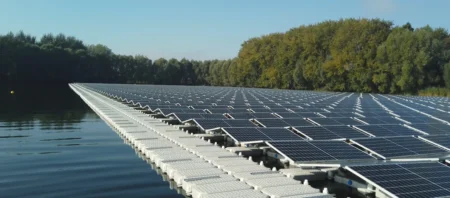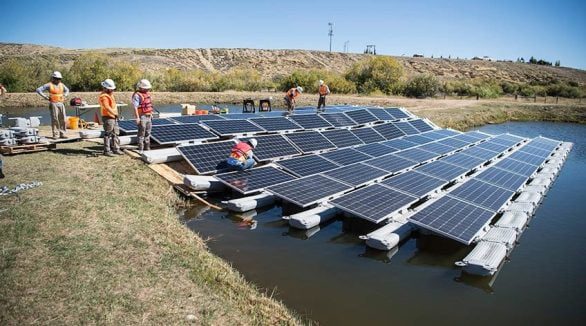November 4, 2014 — University of Wyoming graduate student Brandon Durant has spent much of the last four years in laboratories on the fourth floor of UW’s Physical Sciences Building, laboring largely by himself in search of ways to produce less-expensive, more efficient solar energy cells.
Over the summer, the Ph.D. student in chemistry rubbed shoulders with some of the nation’s best solar researchers at the National Renewable Energy Laboratory (NREL) in Golden, Colo., and learned he is on the cutting edge in researching photovoltaic fabrication technologies.
Durant, who came to UW after earning a bachelor’s degree in chemistry from the University of Texas-Austin, was one of 13 people from some of the country’s top universities selected to participate in the Hands on PV Experience (HOPE) workshop hosted by NREL, the world’s premier solar energy lab. The intensive, weeklong program provided him with new insights into his research and showed he’s in good company, as the group included students from Stanford, Caltech, MIT, Purdue and other top institutions.
“Nobody here is doing anything like what he’s doing,” says Bruce Parkinson, the J.E. Warren Professor of Energy and the Environment in UW’s School of Energy Resources (SER) and the Department of Chemistry. “He was pretty much a perfect candidate for the program.”
Durant is one of about two dozen UW graduate students studying through SER’s competitive graduate assistantship program, which attracts students from across the country to conduct research that benefits Wyoming’s industries and economy.
His research focuses on the use of CZTS — a compound containing copper, zinc, tin and sulfur — as a thin film absorber in solar cells and, eventually, panels. The most common substance used for that purpose is silicon, but it takes three to four years for silicon panels to produce the amount of energy expended in their production. As a result, there is increased interest in thin film solar cells that are less expensive and energy-intensive to produce. Unfortunately, many of the current thin film devices contain either toxic or rare elements.
CZTS is nontoxic, contains common elements and has the potential to be much less expensive and more scalable — while achieving “energy payback” in as little as three months.
“I’m studying how to effectively fabricate the compound as a thin film absorber material and improve its efficiency,” Durant says.
Durant says he expects his UW research to take another year and a half, after which he hopes to secure a postdoctoral position with a larger photovoltaic research group and eventually work in the solar industry. In the meantime, he’s enjoying his time at UW and working under Parkinson, an internationally recognized solar energy researcher who came to UW in 2008 to establish SER’s solar program.
“It definitely has been a good experience,” Durant says, praising UW’s relatively small classroom and lab enrollments, and Wyoming’s outdoor recreation opportunities (he’s an avid snowboarder).
Parkinson says recruiting graduate students of Durant’s caliber is an important part of establishing a top-flight solar energy research program at UW. While SER’s Center for Photoconversion and Catalysis is relatively young, it already has made significant strides and is preparing to install solar panels atop UW’s new Energy Innovation Center in coming weeks — both to help power the building and to use in teaching.
Share your industry press now!
Are you a PR agency or sustainability-focused organization? Join the World of Renewables network FREE today and gain exclusive access to our platform to promote your business, share the latest industry news, and connect with a global audience of 700,000+ renewable energy professionals.
Register Now to start posting your updates and showcase your expertise to a highly engaged, environmentally-conscious community.
Find out more about our Content Partnership Programs.*2024 AWARD WINNER* Websites & Mobile Sites, Webby Winner, Peoples Voice 2024














